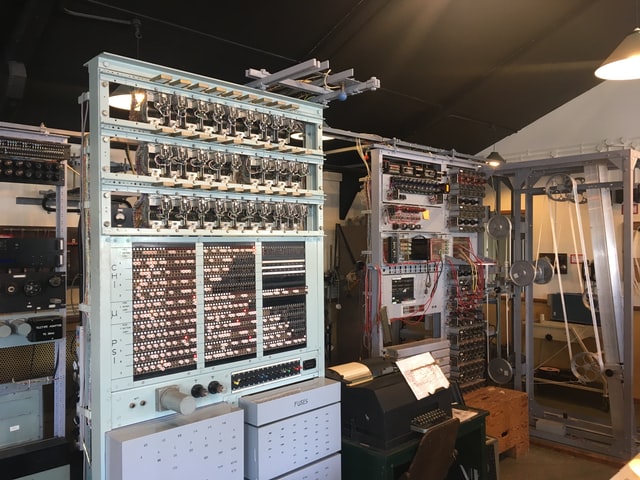Assisted by various industrial networks, automation in industry can reduce cost greatly because it takes advantage of control systems and information technologies to optimize productivity in the production of goods and delivery of services. However, the industrial environment is dynamic and harsh usually, including extreme temperature, humidity, electromagnetic interference and vibration, which proposed specific requirements to intelligent industrial systems under certain circumstances. All these highlight the criticality of the design, analysis and implementation of intelligent industrial systems. This week we’ve selected TOP 5 articles from EAI Endorsed Transactions on Industrial Networks and Intelligent Systems journal.
- An Efficient Pest Classification In Smart Agriculture Using Transfer Learning
Authors of this paper, Tuan T. Nguyen, Quoc-Tuan Vien, and Harin Sellahewa, introduce an efficient method basing on deep learning approach to classify pests from images captured from the crops. The proposed method is implemented on various EfficientNet and shown to achieve a considerably high accuracy in a complex dataset, but only a few iterations are required in the training process. This paper appeared in issue 26 of EAI Endorsed Transactions on Industrial Networks and Intelligent Systems.

2. Formation Control Algorithms for Multiple-UAVs: A Comprehensive Survey
The authors of this paper, Hai T. Do, Hoang T. Hua, Minh T. Nguyen, Cuong V. Nguyen, Hoa TT. Nguyen, Hoa T. Nguyen, and Nga TT. Nguyen, review the profound studies on formation control in literature. Each approach is investigated based on different criteria, which highlights its distinct merits and demerits. The comparison is provided to facilitate the readers in their future researches in the field of formation control. Finally, some open challenges and research directions are also discussed. This article was published in issue 27 of EAI Endorsed Transactions on Industrial Networks and Intelligent Systems.

3. Performance Analysis for RF Energy Harvesting Mobile Edge Computing Networks with SIMO/MISO-NOMA Schemes
The authors of this paper, Dac-Binh Ha, Van-Truong Truong, Yoonill Lee, study an RF energy harvesting mobile edge computing network based on a SIMO/MISO system and NOMA schemes over Nakagami-m fading. Specifically, a multi-antenna user harvests RF energy from a power station by using a selection combining/maximal ratio combining scheme and offload its tasks to two MEC servers through downlink NOMA by employing transmit antenna selection/maximal ratio transmission scheme. Accordingly, they investigate the performance of six schemes, namely SC-TAS1, SC-TAS1, MRC-TAS1, MRC-TAS2, SC-MRT, and MRC-MRT, for this considered system. This paper was published in issue 27 of EAI Endorsed Transactions on Industrial Networks and Intelligent Systems.

4. Performance Evaluation of MAC Layer Protocol over Wireless Body Area Sensor Networks
This article explores the intricacies of the ZigBee wireless protocol that works on the underlying IEEE 802.15.4 standard in order to fine-tune it in a way that will meet the unique requirements of a Wireless Body Sensor Network. This particular standard is relatively new and is specifically designed to offer low cost and power consumption, reliability, and inter-operability for sensor and control applications with low to moderate data rates. This paper is authored by Dung Ong Mau, Thuong C. Lam, and Thanh-Hieu Nguyen. It appeared in issue 27 of EAI Endorsed Transactions on Industrial Networks and Intelligent Systems.

5. Application of Artificial Intelligence for the Optimization of Hydropower Energy Generation
In this research paper, Krishna Kumar, R. P. Saini explain that erosion, cavitation, and operation & maintenance are the key challenges in hydropower energy generation. Artificial Intelligence (AI) has become popular, which can be utilized for site selection, parameters assessment, and operation & maintenance optimization. In this article, a literature review on applications of AI in hydropower has been presented, and an attempt has also been made to identify the future potential areas of hydropower plants. This paper appeared in issue 28 of EAI Endorsed Transactions on Industrial Networks and Intelligent Systems.

EAI Endorsed Transactions on Industrial Networks and Intelligent Systems is an open access, peer-reviewed scholarly journal focused on ubiquitous computing, cloud computing, and cyber-physical system, all kinds of networks in large-scale factories, including a lot of traditional and new industries. The journal, which is jointly sponsored and co-organized by Duy Tan University (Vietnam), publishes research articles, review articles, commentaries, editorials, technical articles, and short communications with a quarterly frequency (four issues per year). Authors are not charged for article submission and processing.
Discover more topics: Should a Ph.D. student attend academic research conferences?

